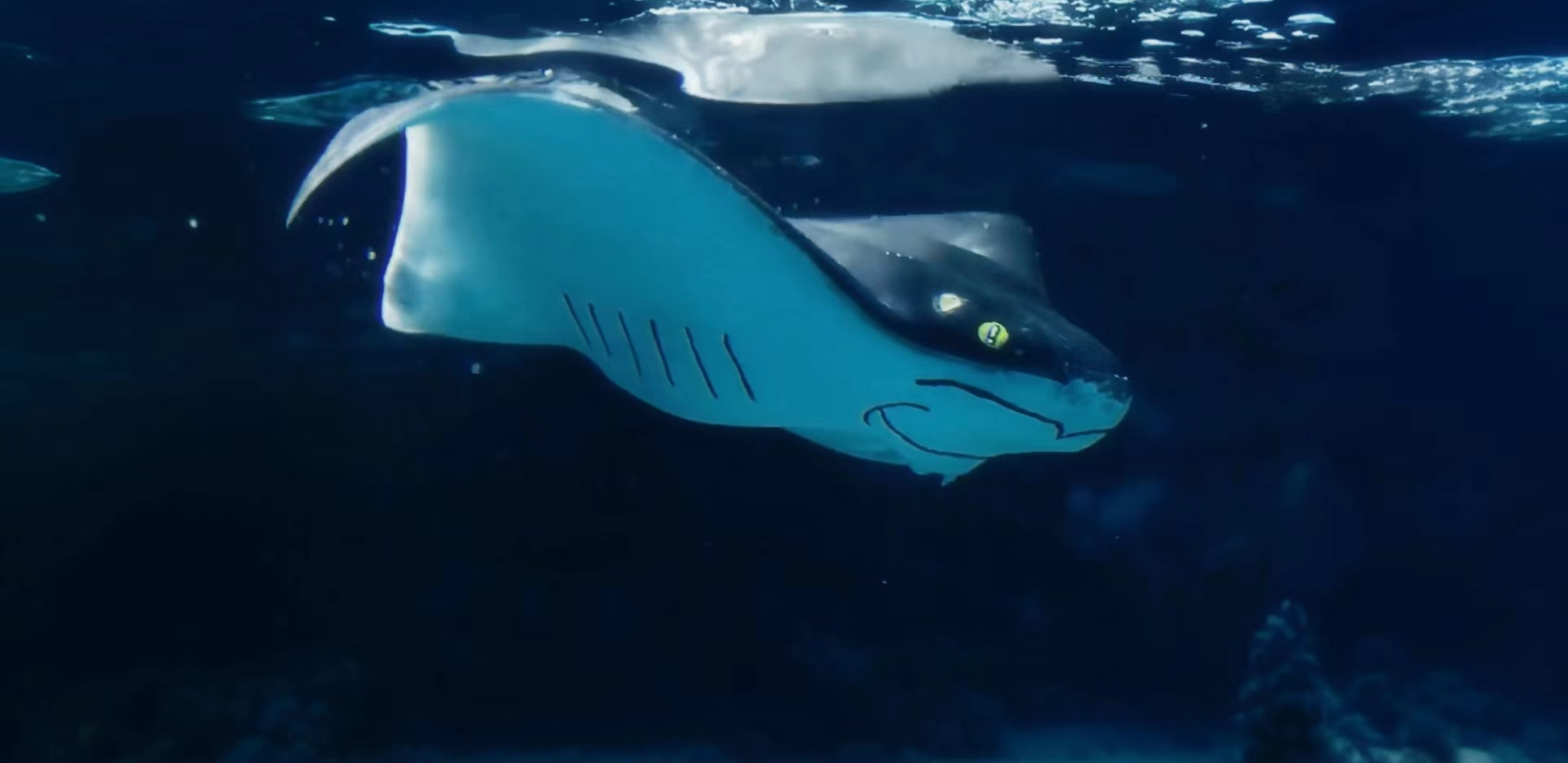China's Ocean Phantom: Bionic Manta Ray Glides into Existence

The manta ray glides effortlessly through the water, its massive wings undulating in a mesmerizing rhythm. With each graceful flap, it propels itself forward, seemingly suspended in the weightless, aquatic environment. For untrained eyes, it’s really hard to spot anything unusual. Just another day in the aquarium. However, the creature in front of us is nothing short of an engineering miracle.
This manta ray is like no other. Developed by scientists from Shanghai Ocean University, the bionic fish, Wenyao, replicates the marine animal’s ethereal motion through a carefully engineered soft-bodied structure. While the manta uses the power of its muscular fins to soar through the water, Wenyao mimics this movement with a meticulously designed series of actuators and control systems.
Named after a mythical creature from the Classic of Mountains and Seas, an ancient collection of folklore and geography dating back to around 200 BC, Wenyao weighs 35 pounds and has a wingspan of 1 meter. It is the result of over a decade of research and development by a team of more than 30 experts at the university.

“Currently, numerous scientific institutions worldwide are focusing on research related to rigid and flexible structures, while our team specializes in the field of ‘soft-bodied’ structures,” explained Chen Xinjun, Dean of the School of Marine Bioresources and Management and the leader of the bionic fish project. “We took inspiration from the ethology of real fish, meticulously replicating their morphology, motion, behavior, structure, and materials to create this highly realistic and capable bionic model,” The core components of the Wenyao are fully domestically produced in China, boasting high efficiency, low power consumption, and multi-functionality. Crucially, the bionic fish also possesses three key advantages – compatibility, super-biomimicry, and stealth – making it well-suited for a wide range of maritime applications.
“The ‘Wenyao’ can easily navigate underwater, turning, rolling, and looping with remarkable agility, despite weighing 35 pounds in the air,” Chen said. “And with just 3 small batteries, it can operate for over 3 hours, demonstrating its impressive endurance.”
The bionic fish’s capabilities extend far beyond merely mimicking a real creature. Equipped with a suite of high-precision sensors, Wenyao can perform underwater monitoring tasks, mapping ocean topography, and even identifying fish schools with an accuracy rate of up to 90% using advanced AI-powered target recognition technology.
“This is just the beginning,” Chen noted. “The next generation of Wenyao will be integrated with Huawei chips, giving it even greater intelligence and expanding its potential applications in marine science, environmental protection, and economic development.”
By achieving a remarkable resemblance to living organisms in terms of external contours and dynamic full-motion simulation, Wenyao has been able to soar through the ocean with astonishing authenticity. The unveiling of the Wenyao marks a significant milestone in China’s pursuit of cutting-edge bionic technology. Its wide range of applications, including deep-sea exploration and offshore fishing, hold significant importance, contributing to the development of the marine economy and the safeguarding of national sovereignty.





